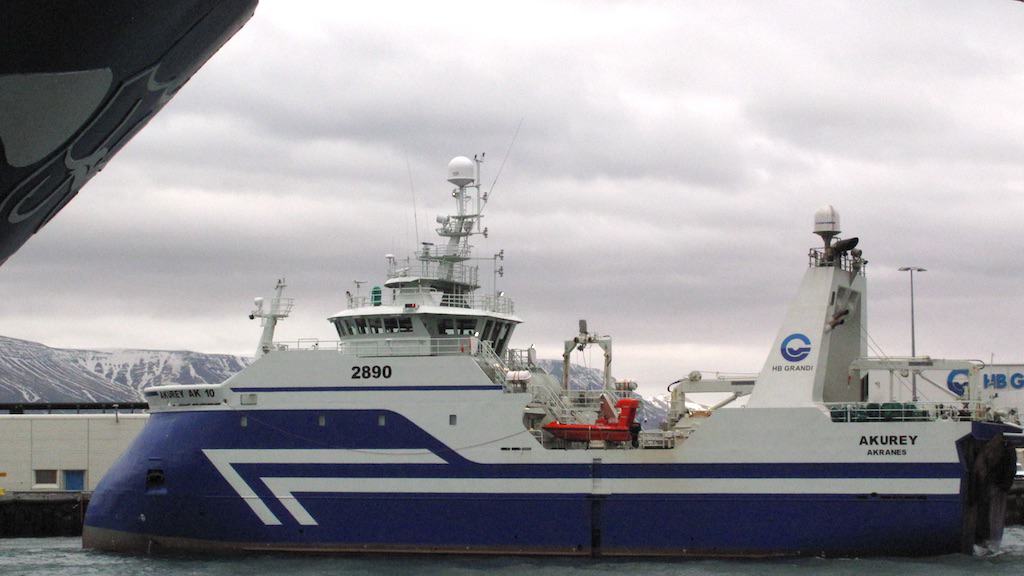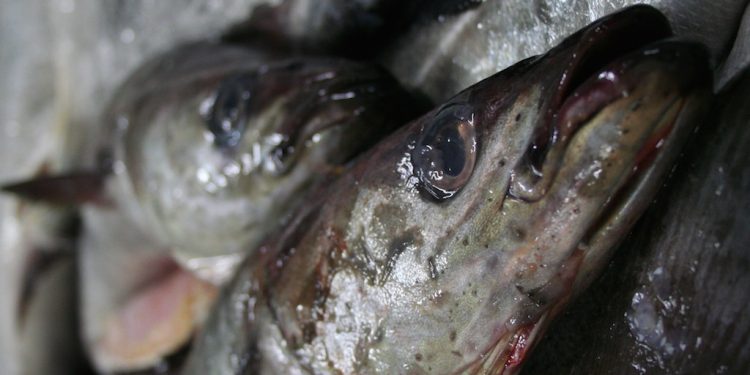Icelandic fishing company Síldarvinnslan reports that its fresher trawler Gullver docked this week with a 90-tonne trip on board, with a mix of most species in the fishroom – except for saithe.
Gullver’s skipper Thórhallur Jónsson said that they had been fishing on east coast grounds, and found plenty of cod and haddock, as well as a decent showing of redfish.
‘But the saithe are elusive. There’s a lot of searching for saithe over a wide area, with limited success,’ Thórhallur Jónsson said.

There’s nothing new about this. Icelandic trawler skippers have been struggling to find saithe for most of this year, and longer. In many ways closer to a pelagic species in its habits, saithe can often be an elusive and unpredictable species, and this year the fleet is falling far short of catching its quotas.
According to figures collated by Icelandic industry website Aflafréttir, this year’s (2021-22) saithe quota was 61,000 tonnes, plus a 3807 tonne additional allocation, to which could be added 13,000 tonnes carried over from the previous year, all of which adds up to roughly 79,000 tonnes.
Uncaught quota
With a month to go of the 2021-22 quota year – which ends on 31st August – saithe catches for the year had come to 45,000 tonnes, or approximately 57% of the quota, leaving around 33,500 tonnes uncaught.
Some of the larger trawlers in the fleet, Guðmundur í Nesi, Arnar, Sólborg and Blængur, still have substantial saithe quotas that clearly aren’t going to be caught this year, and the situation is the same among smaller boats that use static gears. Right now saithe quotas can be leased at low prices, and market prices are respectable, but all the same, it’s clear that a large chunk of this year’s saithe quota is going to remain uncaught.
While the headache of finding saithe catches is a recurring refrain among trawler skippers, the problem doesn’t appear to be any particular problem with the stock, although the Marine Research Institute has advised an 8% reduction in the 2022-23 quota for saithe. Iceland’s scientists haven’t been shy about recommending some drastic quota reductions, as they have done with both cod and redfish – to the fury of fishermen – and it can be safely assumed that it there were serious concerns about the strength of the saith stock, then the Institute would hardly have advised such a modest quota reduction for next year.
Frustrating to not find saithe
‘It’s infuriating when scientists state in public documents that skippers neglect to fish for saithe. That’s not the case. I don’t know any trawler skipper who isn’t busy searching for saithe in decent amounts,’ said Eiríkur Jónsson, skipper of Brim’s fresher trawler Akurey, who has already spent much of this year searching for saithe and avoiding choke species.
He was on board for the last trip, and reports that it went well, with this trip a day shorter than had been scheduled and a catch of between 160 and 170 tonnes.
‘We started at the southern end of the Víkuráll Gully. There was mixed fishing to start with, but later on only redfish. So we hauled and headed north to the Thverálshorn area. There was reasonable fishing for saithe, but the bulk of the catch was cod. The proportion of saithe must have varied between 10 and 30% from one haul to the next. It was noticeable that these were very large, good-quality saithe, while the cod were on the small side.’
On the way back southwards, Eiríkur Jónsson and his crew took one haul on the Hali grounds for 10 or 11 tonnes of redfish.
‘We finished up on the shallow grounds off Patreksfjörður, on the Kögurgrunn grounds. There was heavy fishing for cod and it would have been easy to have had more,’ Eiríkur Jónsson said, adding that with around a month left of the current quota year, he expects species such as golden redfish and haddock to be a problem as these become choke species – while there should be plenty of cod and saithe quota left.









